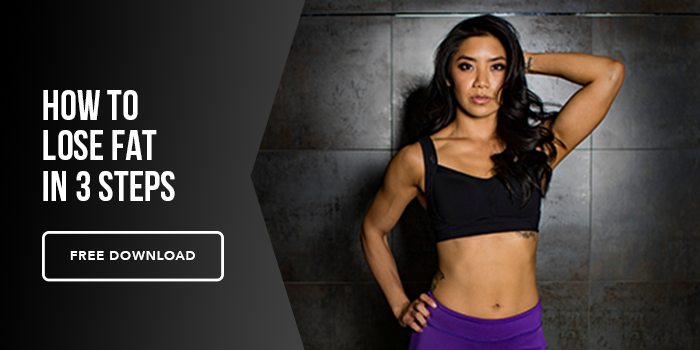Most people fail at fat loss before they even start — not because they lack discipline, but because their expectations are completely unrealistic.
You don’t need to starve yourself, train twice a day, or drop 20 pounds in a month to succeed. This isn’t The Biggest Loser. No one is going to send you home at the end of an episode for taking a bite of cake on your daughter’s first birthday. In real life, things go wrong, progress moves slowly, and slip-ups happen. But instead of it being sent packing, you must stay the course and move forward. To navigate that journey, you need a plan that’s both sustainable and science-backed.
1. Aim for 0.5-1% of Your Body Weight Per Week
Forget the “10 pounds in 10 days” nonsense. A realistic fat loss rate is 0.5-1% of your body weight per week.
-
For a 200-pound person: That’s 1-2 pounds per week.
-
For a 150-pound person: That’s 0.75-1.5 pounds per week.
This ensures you’re losing mostly fat—not muscle. Rapid weight loss often means muscle loss, which slows your metabolism and makes long-term fat loss harder.
The takeaway? A steady, sustainable approach beats aggressive dieting every time.
2. Stop Obsessing Over the Scale
Your weight will fluctuate daily due to water retention, glycogen storage, sodium intake, and hormones. If you let the scale dictate your success, you’ll drive yourself insane.
Instead of fixating on the number, track:
-
Measurements (waist, hips, arms, legs)
-
Progress photos (taken under the same lighting/angles)
-
Strength levels (are you getting stronger in the gym?)
-
Clothing fit (are your pants looser?)
Fat loss is about body composition—not just weight. If you’re losing inches but the scale isn’t moving, you’re still making progress.
3. Create a Moderate Calorie Deficit (Not an Extreme One)
To lose fat, you need a calorie deficit (burning more calories than you consume). But the bigger the deficit, the harder it is to sustain. Starving yourself leads to burnout, binge eating, and muscle loss.
A good starting point:
- 500-750 calorie deficit per day (enough for 1-1.5 lbs of fat loss per week)
- Keep protein high (0.8-1g per pound of target weight) to preserve muscle
- Eat whole, nutrient-dense foods to stay full and avoid cravings
Fat loss is a marathon, not a sprint. If your diet isn’t sustainable, it won’t work long-term.
4. Prioritize Strength Training Over Endless Cardio
Cardio burns calories, but resistance training changes your metabolism. Lifting weights preserves muscle mass, which keeps your metabolic rate higher so you burn more calories at rest.
Best approach?
-
3-5 weight training sessions per week
-
Move more daily (steps, walking, active hobbies)
-
Add 1-3 short cardio sessions (HIIT or LISS) if needed
If you train properly, you’ll burn fat while keeping muscle. If you only do cardio, you risk losing both fat and muscle—leading to a slower metabolism.
5. Understand That Fat Loss Isn’t Linear
Fat loss never happens in a straight line. You’ll have weeks where the scale barely moves, even if you’re doing everything right. This is normal.
Why?
- Water retention masks fat loss
- Stress and sleep impact weight fluctuations
- Your body adapts over time, slowing fat loss temporarily
Instead of panicking, look at monthly trends, not daily changes. Stay consistent, trust the process, and don’t let short-term fluctuations throw you off.
6. Set Non-Scale Goals to Stay Motivated
Focusing only on weight loss can be discouraging. Instead, set goals that reflect overall progress:
-
Strength goals: Squat, deadlift, or bench press improvements
-
Performance goals: Run a mile faster, improve endurance
-
Habit goals: Cook more meals at home, increase daily protein intake
Non-scale victories keep you engaged and help you enjoy the journey instead of obsessing over a number.
7. Have a Long-Term Mindset
Anyone can crash diet for a few weeks. The real challenge? Keeping the fat off.
The best diet isn’t the one that gets results fastest—it’s the one you can stick to for life.
- Don’t cut entire food groups unless necessary
- Practice moderation instead of extreme restriction
- Make small, sustainable changes rather than drastic ones
Fat loss isn’t about suffering—it’s about building habits that last.
8. Understand Adaptation and Make Adjustments
Your body is incredibly adaptive. If you’ve been dieting for a long time and fat loss slows down, it’s not because you’re broken—it’s because your body is smart.
To counteract adaptation:
-
Reassess calorie intake – Are you still in a deficit?
-
Increase movement – Daily steps and NEAT (non-exercise activity thermogenesis) add up.
-
Cycle out of a deficit if needed – Long-term dieting can slow metabolic rate. A maintenance phase or a complete reverse diet can help reset your body before another fat loss phase.
Instead of forcing results, learn how to work with your body, not against it.
The Bottom Line
✔ Aim to lose 0.5-1% of your body weight per week—no crash diets.
✔ Track progress with more than just the scale.
✔ Create a manageable calorie deficit—don’t starve yourself.
✔ Prioritize lifting weights to preserve muscle and metabolism.
✔ Understand that fat loss isn’t linear—stay patient.
✔ Set non-scale goals to stay motivated.
✔ Think long-term—sustainable changes lead to sustainable results.
✔ Recognize adaptation and make smart adjustments when needed.






